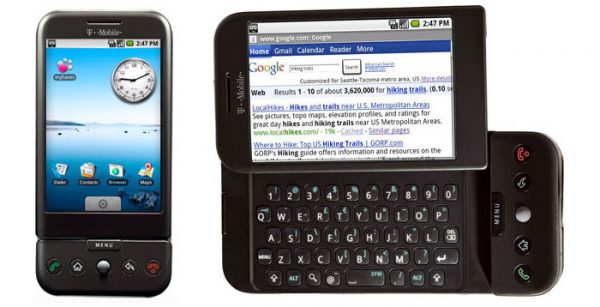The HTC Dream or T-Mobile G1 was launched 10 years ago – September 23, 2008, precisely, and it was Google’s foray into the world of mobile operating systems. The device ran the first public version of Android – Android 1.0 and featured a slide-out keyboard design and trackball.
The Android operating system was designed by Andy Rubin and distributed by Google. It was supposedly going to be the main rival to Apple’s iOS which launched the previous year on the iPhone 3G. iOS was already notable for its clean and simple interface, while Android brought more customizations to users with widgets and other UI elements. Despite its many UI tricks, Android always fell behind iOS in terms of user experience. But many years down the line, it’s quite obvious that Android’s UX game is much stronger, coupled with its flexibility, something Apple doesn’t subscribe to.

Much of the success of Android is attributed to its open source nature. A handful of OEMs got the OS running on their devices, helping to accelerate its growth. The slicker and more visually appealing Moto Droid came in 2009 running Android. Google and HTC continued their partnership which led to the Nexus line of devices.
Today, over 85 percent of all the world’s phones run on Android. Good old Samsung plunged into Android with the Galaxy S line of devices. After a couple of models, the brand was heralded as the face of Android and Apple’s main challenger. In 2017, Andy Rubin – creator of Android, debuted the essential phone that featured a little tiny notch and support for hardware add-ons.
The Android OS has helped to pioneer a technology revolution in continents like Asia and Africa. As it enters its second decade, there’s no sign that anything is going to slow its growth.


